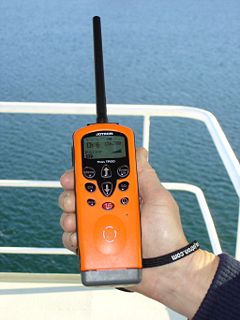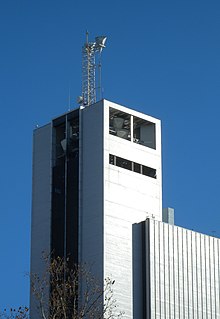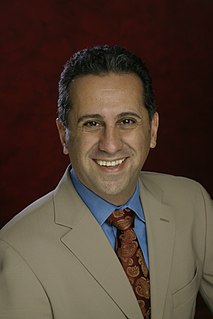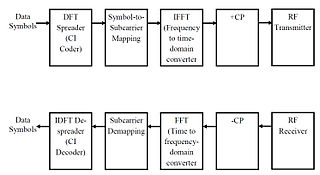Space–time trellis codes (STTCs) are a type of space–time code used in multiple-antenna wireless communications. This scheme transmits multiple, redundant copies of a generalised TCM signal distributed over time and a number of antennas ('space'). These multiple, 'diverse' copies of the data are used by the receiver to attempt to reconstruct the actual transmitted data. For an STC to be used, there must necessarily be multiple transmit antennas, but only a single receive antennas is required; nevertheless multiple receive antennas are often used since the performance of the system is improved by the resulting spatial diversity.

A space–time code (STC) is a method employed to improve the reliability of data transmission in wireless communication systems using multiple transmit antennas. STCs rely on transmitting multiple, redundant copies of a data stream to the receiver in the hope that at least some of them may survive the physical path between transmission and reception in a good enough state to allow reliable decoding.

Wireless communication, or sometimes simply wireless, is the transfer of information or power between two or more points that are not connected by an electrical conductor. The most common wireless technologies use radio waves. With radio waves distances can be short, such as a few meters for Bluetooth or as far as millions of kilometers for deep-space radio communications. It encompasses various types of fixed, mobile, and portable applications, including two-way radios, cellular telephones, personal digital assistants (PDAs), and wireless networking. Other examples of applications of radio wireless technology include GPS units, garage door openers, wireless computer mice, keyboards and headsets, headphones, radio receivers, satellite television, broadcast television and cordless telephones. Somewhat less common methods of achieving wireless communications include the use of other electromagnetic wireless technologies, such as light, magnetic, or electric fields or the use of sound.
In Information theory, redundancy measures the fractional difference between the entropy H(X) of an ensemble X, and its maximum possible value . Informally, it is the amount of wasted "space" used to transmit certain data. Data compression is a way to reduce or eliminate unwanted redundancy, while checksums are a way of adding desired redundancy for purposes of error detection when communicating over a noisy channel of limited capacity.
In contrast to space–time block codes (STBCs), they are able to provide both coding gain and diversity gain and have a better bit-error rate performance. In essence they marry single channel continuous time coding with the signaling protocol being used, and extend that with a multi-antenna framework. However, that also means they are more complex than STBCs to encode and decode; they rely on a Viterbi decoder at the receiver where STBCs need only linear processing. Also, whereas in a single transmitter, single receiver framework the Viterbi algorithm (or one of the sequential decoding algorithms) only has to proceed over a trellis in a single time dimension, in here the optimal decoding also has to take into consideration the number of antennas, leading to an extraneous polynomial complexity term.
Space–time block coding is a technique used in wireless communications to transmit multiple copies of a data stream across a number of antennas and to exploit the various received versions of the data to improve the reliability of data transfer. The fact that the transmitted signal must traverse a potentially difficult environment with scattering, reflection, refraction and so on and may then be further corrupted by thermal noise in the receiver means that some of the received copies of the data will be 'better' than others. This redundancy results in a higher chance of being able to use one or more of the received copies to correctly decode the received signal. In fact, space–time coding combines all the copies of the received signal in an optimal way to extract as much information from each of them as possible.
In digital transmission, the number of bit errors is the number of received bits of a data stream over a communication channel that have been altered due to noise, interference, distortion or bit synchronization errors.
The Viterbi algorithm is a dynamic programming algorithm for finding the most likely sequence of hidden states—called the Viterbi path—that results in a sequence of observed events, especially in the context of Markov information sources and hidden Markov models.
STTCs were discovered by Vahid Tarokh et al. in 1998. [1] [2]
Vahid Tarokh is the Rhodes family professor of electrical and computer engineering, a professor of mathematics (secondary), and a professor of computer science (secondary) at Duke University. He is also a Microsoft Data Science Investigator at Microsoft Innovation Hub at Duke University.




